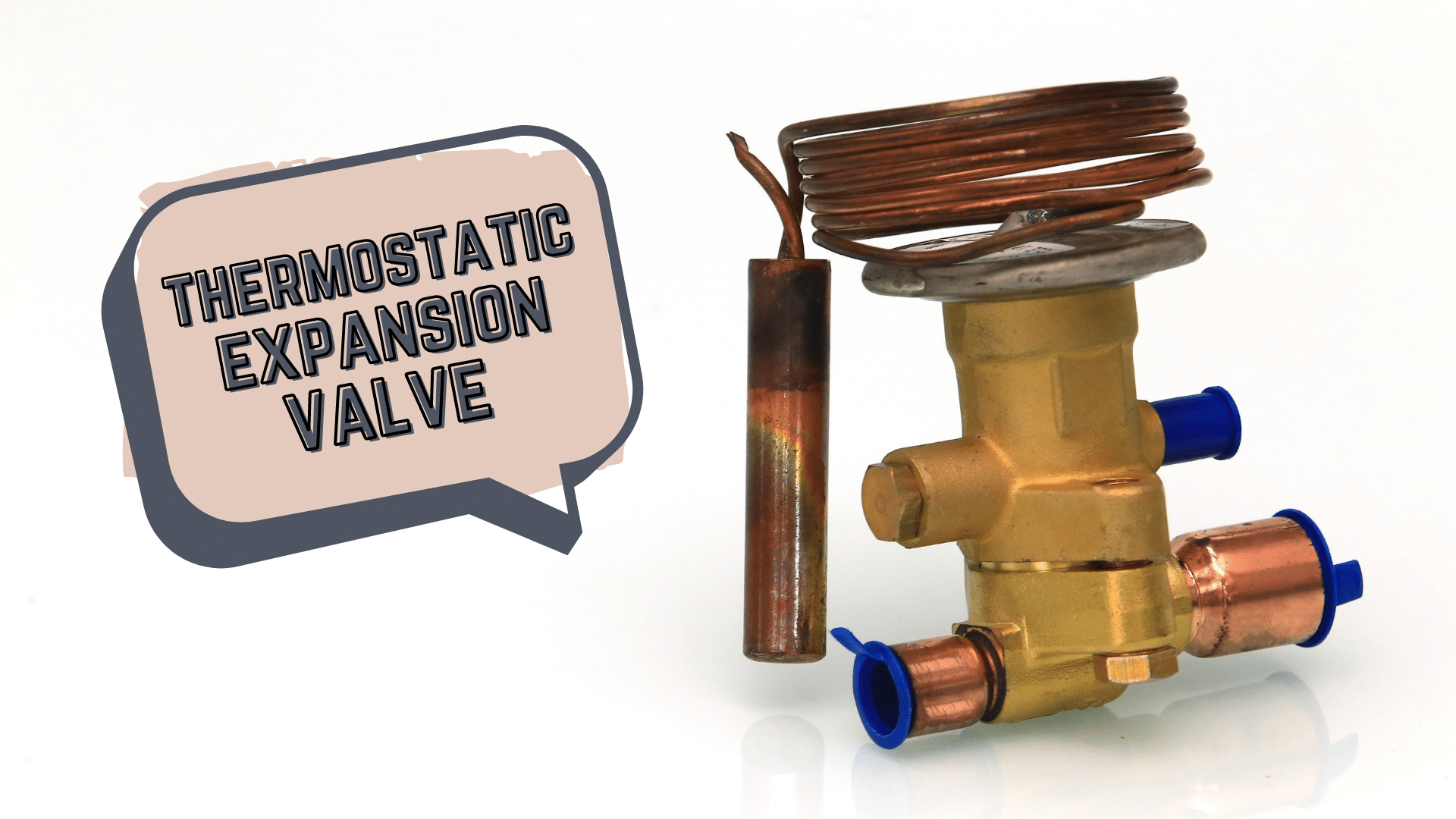Nowadays, most OEM systems are designed to have a thermostatic expansion valve (TXV) style metering device, which has been the industry standard for AC units.
All HVAC systems are composed of complex components, and each of these plays a vital role in adequately cooling and heating your home. Besides HVAC technicians, it's ideal to fully grasp the design, function, and operation of a TXV valve to avoid dealing with pressing issues in the long run.
What is Thermostatic Expansion Valve (TXV)?
Simply put, the thermostatic expansion valve (or TXV) regulates the flow rate of the liquid refrigerant into the evaporator. Controlling the flow is crucial to ensure the maximum efficiency of the evaporator.

It also prevents flood back, which happens if any excess liquid refrigerant returns to the compressor.
What is the Function of the TXV?
The thermostatic expansion valve controls the liquid refrigerant flow rate into the evaporator. Contrary to popular belief, it cannot contain other features such as:
If you use the TXV to control any of these, it may only lead to system malfunction, including potential compressor failure. (Related: Home AC Compressor Replacement Cost & Consumer Guide)
How to Order a TXV Online
Fortunately, there are several ways to order a TXV online to be delivered outside your doorsteps. We’ve rounded up the best methods you can consider.
About Superheat and Pressure
The superheat is tasked with boiling the refrigerant inside the bulb. The process creates pressure that travels along the Capillary hollow tube and into the Power Head. The PowerHead then controls the refrigerant's flow.
A removable cartridge inside the inlet (orifice) works with the valve to control the refrigerant accordingly. The refrigerant stems from the condenser, able to enter the valve body through the inlet. It takes on the form of a medium temperature, high-pressure saturated liquid.
Upon exiting the valve, it passes the outlet, converted to a low-pressure and low-temperature liquid mixture (vapor). This determines the pressure-temperature phase and controls the refrigerant flow, with the pin connected to the diaphragm (located in the control head).
Common Problems with the TXV
The thermostatic expansion valve needs to open a specific amount at a given time to regulate the refrigerant flow well. The excessive refrigerant may flow through the evaporator if it opens too wide. And if it doesn't open wide enough (in some cases, it may not open at all), the refrigerant may not reach the evaporator well.
Commonly, this issue is caused by moisture or other foreign contaminants that jam the TXV. While it's a simple problem to fix, it can be challenging to diagnose as the symptoms are similar to the low refrigerant charge.
That said, it's crucial to hire an experienced HVAC technician to diagnose the problem correctly. They will know the signs to watch out for and can tell you the difference between a broken TXV and a low refrigerant.
When the TXV Valve Fails to Function Properly
Homeowners dealing with TXV-related issues need to ensure the cause behind the problem.
Subcooled Liquid Refrigerant
Thermostatic expansion valves cannot correctly work unless it has the full subcooled liquid refrigerant line. Before adjusting the TXV, ensure that you're using the subcooled liquid refrigerant.
In split expansion, ensure that the condensing unit has proper subcooling without a temperature drop. Some valves also contain a screen– which may also be why you'll need to adjust the TXV.
Pressure Drop Requirement
A specific pressure differential is included in the functions of a TXV. It originates between the evaporator's pressure as well as the liquid pressure.
Since the condensing evaporator's temperature decreases on freezing days, it becomes the required differential temperature. A temperature decrease in the differential pressure may also lead to improper adjustment.
Bulb Placement
The quickest and easy access in adjusting the TXV lies in the bulb's placement. Simply put, it should be at the right place– strapped firmly and correctly.
A TXV valve is designed to ensure the right amount and flow of refrigerant. Hiring a professional technician is the ideal route, given they can adjust the superheat amount accordingly.
Frequently Asked Questions (FAQs)
What is the purpose of a TXV Valve?
The TXV function maintains the stability of forces between two close forces and one open force, such as the equalizer pressure, spring pressure, and bulb pressure, to control the superheat limit on the evaporator coil.
How to adjust a TXV Valve?
First off, there will be a superheat right inlet at the evaporator outlet. Technicians must ensure that the superheat measurement is taken at the same precise place as the bulb and equalizer. These systems do not function properly due to a disruption in the stability of the superheat. Well, you can easily find the superheat right inlet on the evaporator. Mainly the superheat is located at 5 to 10 degrees. But if you face any difficulty finding it, check the appliance's spaces in its booklet. It will help you find the correct location of the superheat on the evaporator. It will be an easy task for you to find the superheat right inlet on the evaporator. The superheat is mainly located at 5 to 10 degrees. However, if you experience any difficulty looking for it, examine the appliance's spaces in its manual. It may help you find the correct location of the superheat on the evaporator.
